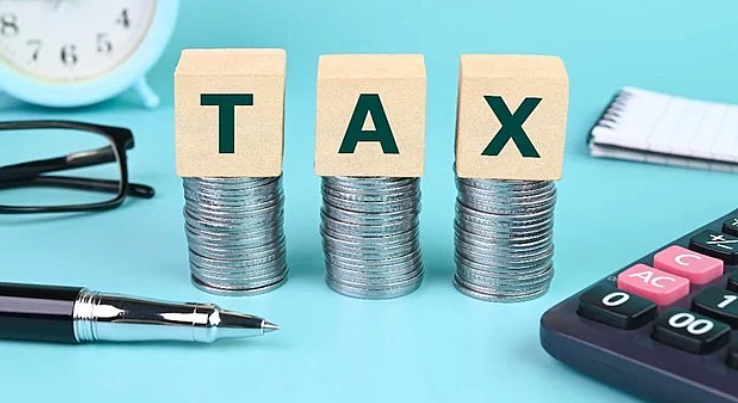
The Direct Tax Code 2025 is set to be a transformative piece of legislation that will overhaul the existing tax framework in India. As the government seeks to create a more streamlined and efficient taxation system, the new Direct Tax Code (DTC) aims to simplify compliance, widen the tax base, and introduce more transparent and rational income tax slabs. This article explores the potential changes brought about by the Direct Tax Code 2025 and their implications on both individual taxpayers and the broader Indian economy.
Simplification of Tax Structure
One of the cornerstone features of the Direct Tax Code 2025 is the simplification of the tax structure. The existing tax framework in India has been widely criticized for its complexity and lack of clarity. The new DTC aims to address these issues by consolidating various provisions and reducing ambiguities. This will make it easier for taxpayers to understand their obligations and for the authorities to enforce compliance.
Rationalization of Income Tax Slabs
A significant change under the Direct Tax Code 2025 will be the rationalization of income tax slabs. The objective here is to make the system more progressive, ensuring that higher-income groups contribute a fair share of their earnings while providing relief to lower and middle-income groups.
For instance, the current tax slabs for individuals below 60 are:- Up to ₹2,50,000: Nil
- ₹2,50,001 to ₹5,00,000: 5%
- ₹5,00,001 to ₹10,00,000: 20%
- Above ₹10,00,000: 30%
The DTC 2025 proposes new slabs, which are expected to provide tax relief to a larger section of the population. The proposed slabs could be:
- Up to ₹5,00,000: Nil
- ₹5,00,001 to ₹10,00,000: 10%
- ₹10,00,001 to ₹20,00,000: 20%
- Above ₹20,00,000: 30%
This restructuring aims to reduce the tax burden on the lower and middle-income classes. A taxpayer earning ₹8,00,000 annually under the current regime pays approximately ₹62,500 in taxes after standard deductions. Under the proposed slabs, the tax liability would reduce significantly, fostering higher disposable income and potentially stimulating economic consumption.
Broader Tax Base
The Direct Tax Code 2025 aspires to broaden the tax base by leveraging advanced data analytics and technology-driven assessments. With the integration of data from various government departments and financial institutions, the tax authorities can better identify potential taxpayers, thereby minimizing tax evasion. This, in turn, would lead to a more equitable distribution of the tax burden and enhanced revenue collection for the government.
Enhanced Compliance and Reduced Litigation
A notable change that the Direct Tax Code 2025 promises is the reduction in tax-related litigation. Today, disputes between taxpayers and tax authorities often lead to protracted legal battles. The new DTC proposes simplified and clear-cut provisions, thereby reducing interpretative ambiguities. This emphasis on clarity is expected to streamline the dispute resolution process, incentivizing voluntary compliance and ensuring quicker redressal of grievances.
Corporate Tax Reforms
The Direct Tax Code 2025 also includes several reforms targeting corporate taxes. The objective is to make India a more attractive destination for businesses by lowering the corporate tax rate and simplifying compliance requirements. Currently, corporates with an annual turnover up to ₹400 crores are taxed at 25%, while others are taxed at 30%. The new DTC proposes a unified corporate tax structure which could potentially lower the highest bracket to 25%, inline with global standards.
Additionally, the DTC aims to remove various surcharges and cess applied on corporate tax, creating a more straightforward and predictable tax regime. These changes are designed to spur economic growth by attracting foreign investment and stimulating domestic business expansion.
Addressing Tax Avoidance and Evasion
The Direct Tax Code 2025 includes stringent measures to curb tax avoidance and evasion. By introducing robust anti-abuse rules and improving the General Anti-Avoidance Rule (GAAR), the code aims to plug loopholes that are often exploited to evade taxes. This move will ensure that tax liability is commensurate with economic reality, fostering a fairer tax system.
Conclusion
The Direct Tax Code 2025 is poised to bring substantial changes to India's tax landscape. By simplifying the tax structure, rationalizing income tax slabs, broadening the tax base, enhancing compliance, reducing litigation, and implementing robust measures against tax avoidance, the DTC aims to create a more efficient and equitable tax system. However, these intended changes will need to be meticulously implemented and continuously monitored to ensure their success and address any unintended consequences.
Summary
The Direct Tax Code 2025 will significantly transform India's tax landscape through the simplification of tax structures, rationalization of income tax slabs, broadening the tax base, and reducing litigation. Key changes include the introduction of more progressive income tax slabs to ease the burden on lower and middle-income groups and the unification of corporate tax rates to foster business growth. Measures to curb tax avoidance and evasion are also integral to the new code, ensuring a fair and equitable tax system. While the proposed changes promise a more efficient and transparent tax regime, it is crucial for taxpayers and stakeholders to thoroughly assess all potential risks and benefits.
Disclaimer:
This article is based on proposed guidelines and anticipations for the Direct Tax Code 2025. Investors and taxpayers are advised to gauge all pros and cons and consult with financial advisors or tax professionals before making any decisions related to trading or compliance within the Indian financial market.

0 Comments
Post Comment